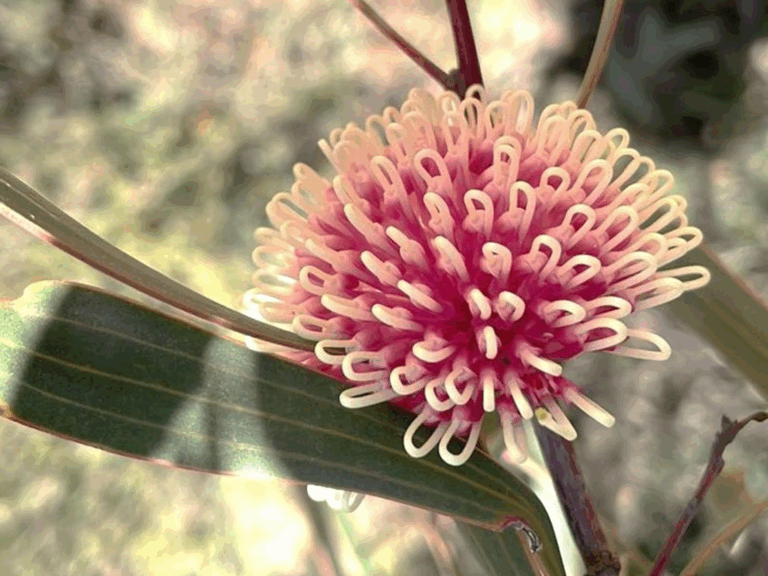Cluster-root secretions improve phosphorus availability in low-phosphorus soil
Joint press release by Hiroshima University, The University of Western Australia, Hokkaido University, Okayama University, and Yamagata University.
Plants require phosphorus to grow and survive. In environments with low levels of available soil phosphorus, plants need to adjust to stay alive.

The pincushion hakea is a large woody, evergreen shrub native to southwestern Australia, an area that has amazingly low levels of soil phosphorus. This plant has adapted to these conditions by forming cluster roots—a large number of smaller rootlets extending from the root axis that resemble a bottlebrush—to extract the small amount of phosphorus in the soil.
Cluster roots help plants in low-nutrient soils by increasing the amount of root surface area in contact with the soil, improving their ability to extract limited resources. Additionally, cluster roots secrete chemicals and enzymes to enhance the bioavailability of nutrients, primarily phosphorus, in the soil. Acid phosphatase, for example, is an enzyme secreted by cluster roots that converts organic phosphorus into a form that plants can readily absorb. Improved understanding of these survival mechanisms could ultimately help researchers develop food crops that can thrive in nutrient-deficient soils.
While researchers have successfully identified many of the chemicals secreted by cluster roots to improve phosphorus availability, the genes and molecular pathways responsible for cluster-root secretion and uptake in the Proteaceae plant family, including pincushion hakea, had not been identified. In order to better understand how cluster roots function at a molecular level, researchers from Hiroshima University, The University of Western Australia, Okayama University, Hokkaido University, Yamagata University and other institutions collaboratively performed an RNA-Seq experiment on pincushion hakea to identify the genes expressed in its cluster roots.
The team published their research on February 24 in the journal New Phytologist.
The complete press release can be downloaded as a PDF.
Contacts:
Researcher contact
Jun Wasaki
Professor, Graduate School of Integrated Sciences for Life, Hiroshima University
Email: junw[at]hiroshima-u.ac.jp
Hirotsuna Yamada
Assistant Professor (Special Appointment), Graduate School of Integrated Sciences for Life, Hiroshima University
Email: hirotsunayamada[at]hiroshima-u.ac.jp
Hans Lambers
Emeritus Professor, School of Biological Sciences, The University of Western Australia
Email: hans.lambers[at]uwa.edu.au
Toshihiro Watanabe
Associate Professor, Faculty of Agriculture, Hokkaido University
Email: nabe[at]agr.hokudai.ac.jp
Takayuki Sasaki
Associate Professor, Institute of Plant Science and Resources, Okayama University
Email: tsasaki[at]okayama-u.ac.jp
Keitaro Tawaraya
Professor, Faculty of Agriculture, Yamagata University
E-mail: tawaraya[at]tds1.tr.yamagata-u.ac.jp
Media contact
Public Relations Office, Hiroshima University
E-mail: koho[at]office.hiroshima-u.ac.jp
Simone Hewett (Media and PR Manager), The University of Western Australia
E-mail: uwamedia[at]uwa.edu.au
Public Relations & Communications Division, Office of Public Relations and Social Collaboration, Hokkaido University
E-mail: en-press[at]general.hokudai.ac.jp
Public Relations Division, General Affairs Department, Okayama University
E-mail: www-adm[at]adm.okayama-u.ac.jp
Secretary’s and Public Relations Office, Yamagata University
E-mail: yu-koho[at]jm.kj.yamagata-u.ac.jp
